第139章 NOTES(1)
[1]--Translation of the "Chronica dos reis de Bisnaga",written by Domingos Paes and Fernao Nunes about 1520and 1535,respectively,with historical introduction.Includes bibliographical references.
[2]--The letters from China were copied by a different hand.
[3]--Barros was apparently never himself in India,but held an official position in the India Office in Lisbon.His work was completed in four Decadas.Couto repeats the fourth DECADA of Barros,and continues the history in eight more DECADAS.The first three DECADAS of Barros were published in A.D.1552,1553,and 1563,bringing the history down to 1527,under the title of DOS FEITOS QUEOS PORTUGUESES FIZERAM NO DESCUBRIMENTO E CONQUISTA DOS MARES E TERRASDO ORIENTE.His fourth DECADA,published by Couto,dealt with the period A.D.1527to 1539,and contained an account of the events that occurred during the governorships of Lopo Vaz de Sampaio and Nuno da Cunha.Couto's own eight DECADAS covered the subsequent period down to 1600.The combined work is generally called the DA ASIA.Couto completed his publication in 1614.The fourth DECADA was published in 1602,the fifth in 1612,the sixth in 1614,the seventh in 1616,the year of his death.Couto spent almost all his life in India,for which country he embarked in 1556.
[4]--CHRONICA DOS REIS DE BISNAGA,by David Lopes,S.S.G.L.Lisbon,1897:at the National Press.The extract given is taken from his Introduction,p.lxxxvi.
[5]--Firishtah was a Persian of good family,and was born about 1570A.D.Early in his life he was taken by his father to India,and resided all his life at the Court of the Nizam Shahs of Ahmadnagar,rejoicing in royal patronage.He appears to have begun to compile his historical works at an early age,since his account of the Bijapur kings was finished in 1596.He appears to have died not long after the year 1611,which is the latest date referred to in any of his writings.
[6]--According to tradition the wealth carried off was something fabulous.See Appendix B.
[7]--It is highly probable that amongst the hills and crags about the upper fortress of Anegundi there may be found remains of a date long prior to the fourteenth century;and it is much to be regretted that up to now no scientific examination of that tract,which lies in the present territories of Haidarabad,has been carried out.Want of leisure always prevented my undertaking any exploration north of the river;but from the heights of Vijayanagar on the south side Ioften looked wistfully at the long lines of fortification visible on the hills opposite.It is to be hoped that ere long the Government of Madras may place us in possession of a complete map of Vijayanagar and its environs,showing the whole area enclosed by the outermost line of fortifications,and including the outworks and suburbs.Hospett and Anegundi were both part of the great city in its palmy days,and Kampli appears to have been a sort of outpost.
[8]--Nuniz erroneously gives the date as 1230.The error will be commented on hereafter.
[9]--Scott,i.45,46.
[10]--Delhi.
[11]--The Portuguese historians often mistook "Cambay"for the name of the country,and "Gujarat"for one of its dependencies.
[12]--SIC.The meaning is doubtful.
[13]--There is evidently a confusion here between tales of the doings of Muhammad Taghlaq and much older legends of Rama's Bridge and his army of monkeys.
[14]--Mallik Naib.(See the chronicle below,pp.296,297.)
[15]--"Your honour"was probably the historian Barros (see preface).
[16]--Sheik Ismail's power in Persia dates from early in the sixteenth century.Duarte Barbosa,who was in India in 1514and wrote in 1516,mentions him as contemporary.He had subjugated Eastern Persia by that time and founded the Shiah religion.Barbosa writes:
"He is a Moor and a young man,"and states that he was not of royal lineage (Hakluyt edit.p.38).Nuniz was thus guilty of an anachronism,but he describes Persia as he knew it.
[17]--"Chronicle of the Pathan Kings of Delhi,"by Edward Thomas,p.200.
[18]--Firishtah (Briggs,i.413).
[19]--Elphinstone,"History of India,"ii.62.
[20]--Lee's translation,p.144.
[21]--Sir H.Elliot's "History of India,"iii.215.
[22]--If we add together the number of years of the reigns of kings of Vijayanagar given by Nuniz prior to that of Krishna Deva Raya ("Crisnarao"),we find that the total is 180(Senhor Lopes,Introduction,p.lxx.).The date of the beginning of the reign of Krishna Deva Raya is known to be 1509--10A.D.;whence we obtain 1379--80A.D.as the foundation of the empire in the person of "Dehorao"according to the chronicle.This is not quite accurate,but it helps to prove that "1230"is a century too early.
[23]--Batuta was a native of Tangiers,his name being Sheik Abu'
Abdullah Muhammad.He arrived at the Indus on the 1Muharram A.H.734(September 12,1333A.D.),and he seems to have resided in India till 1342.
[24]--The narrative is given in the French translation of Ibn Batuta's travels,by Defremery and Sanguinetti (vol.iii.pp.318--320).See also Sir Henry Elliot's "History of India"(vol.iii.pp.615--616).
[25]--Firishtah's account is somewhat different,and he gives the date A.H.739,or July 20,1338,to July 9,1339.But I consider the narrative of Ibn Batuta to be far the most reliable,since he wrote from personal experience,while Firishtah compiled his story two and a half centuries later.
[26]--This was Ghiyas-ud-din Bahadur Bura of Bengal,mentioned above.
[27]--This tale is told of the rise of almost every kingdom,principality,or large zamindari in Southern India,the usual variant being the discovery of a hidden treasure.
[28]--I think that there can be little doubt that this derivation,though often given,is erroneous,and that the name was "City of Victory,"not "City of Learning,"--VIJAYA,not VIDYA.VYDIAJUNAevidently represents VIDYARJUNA.